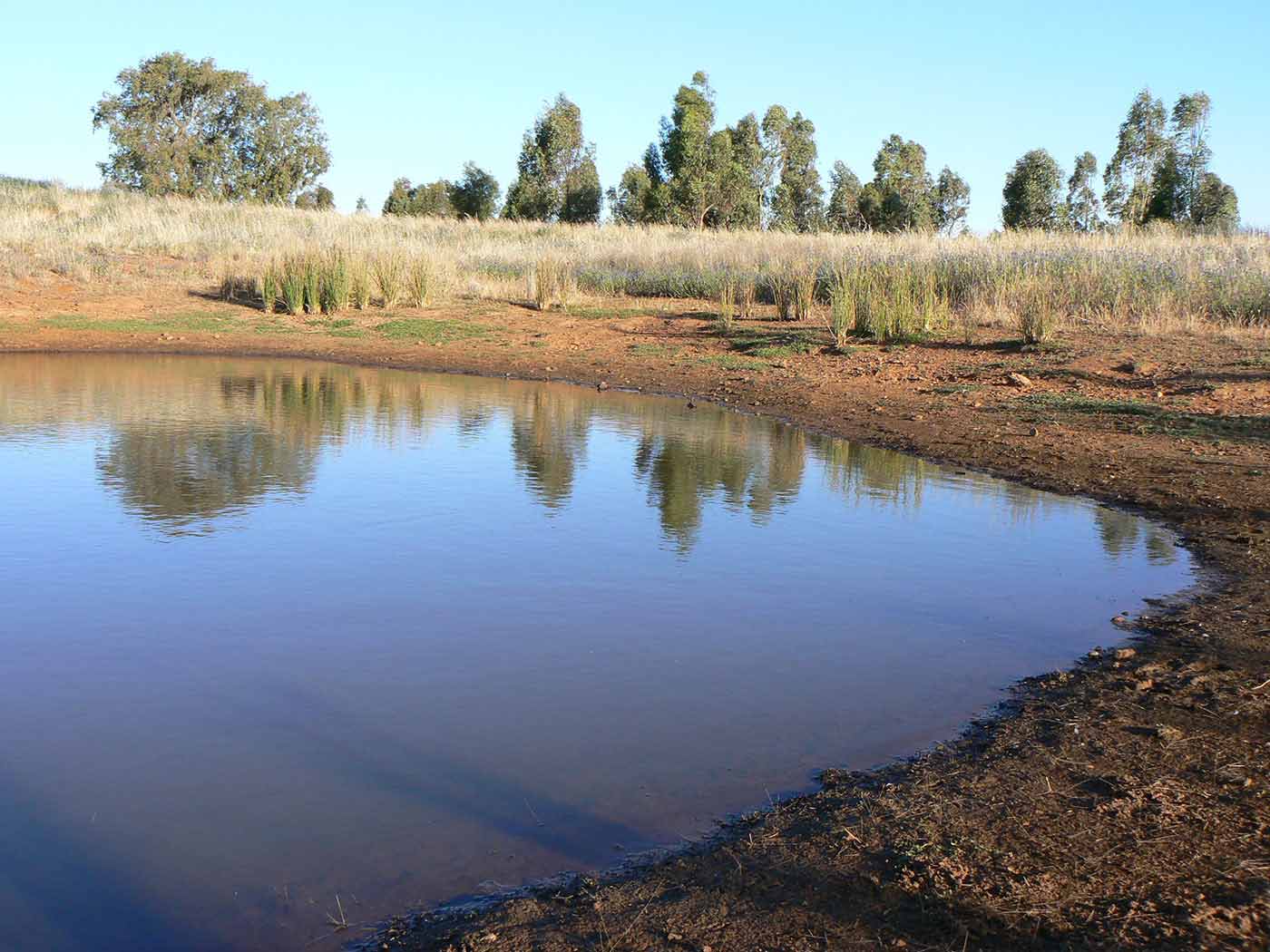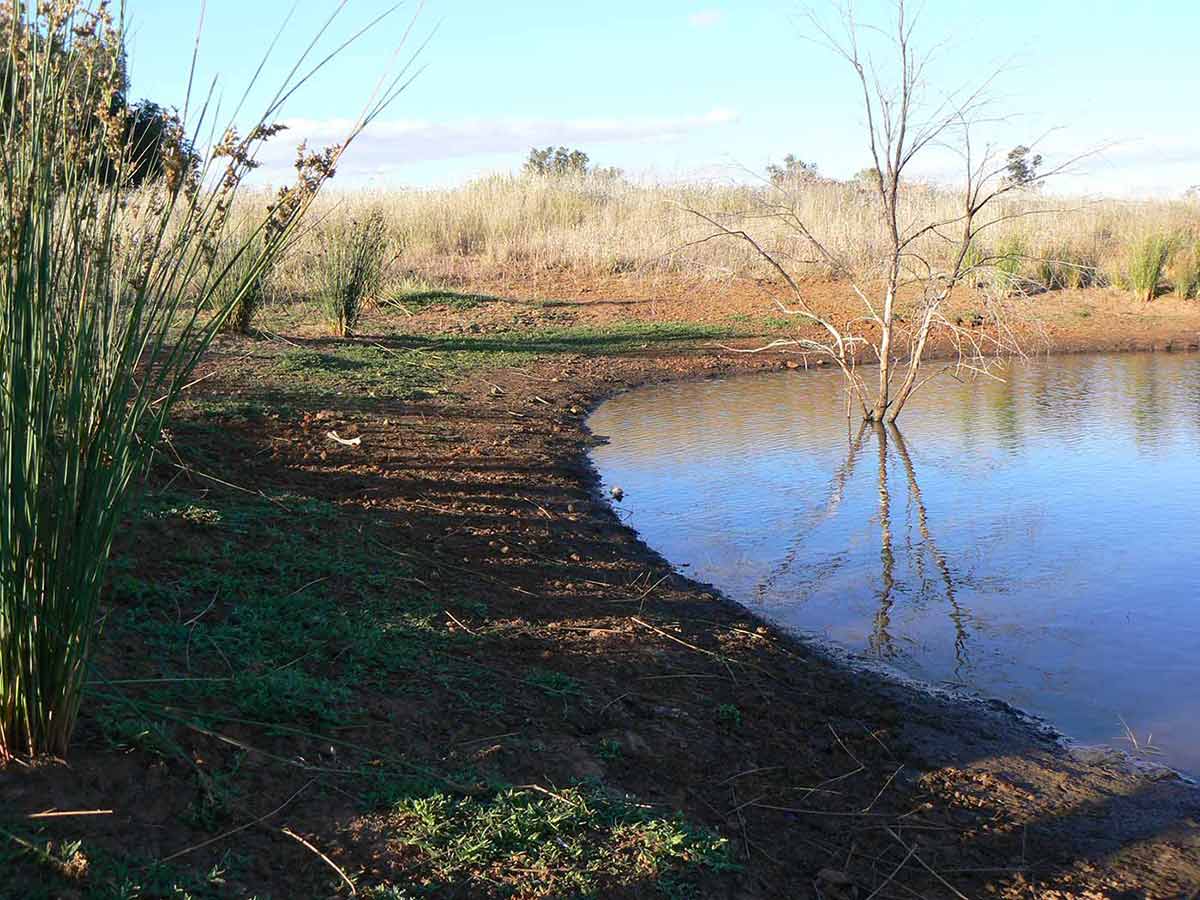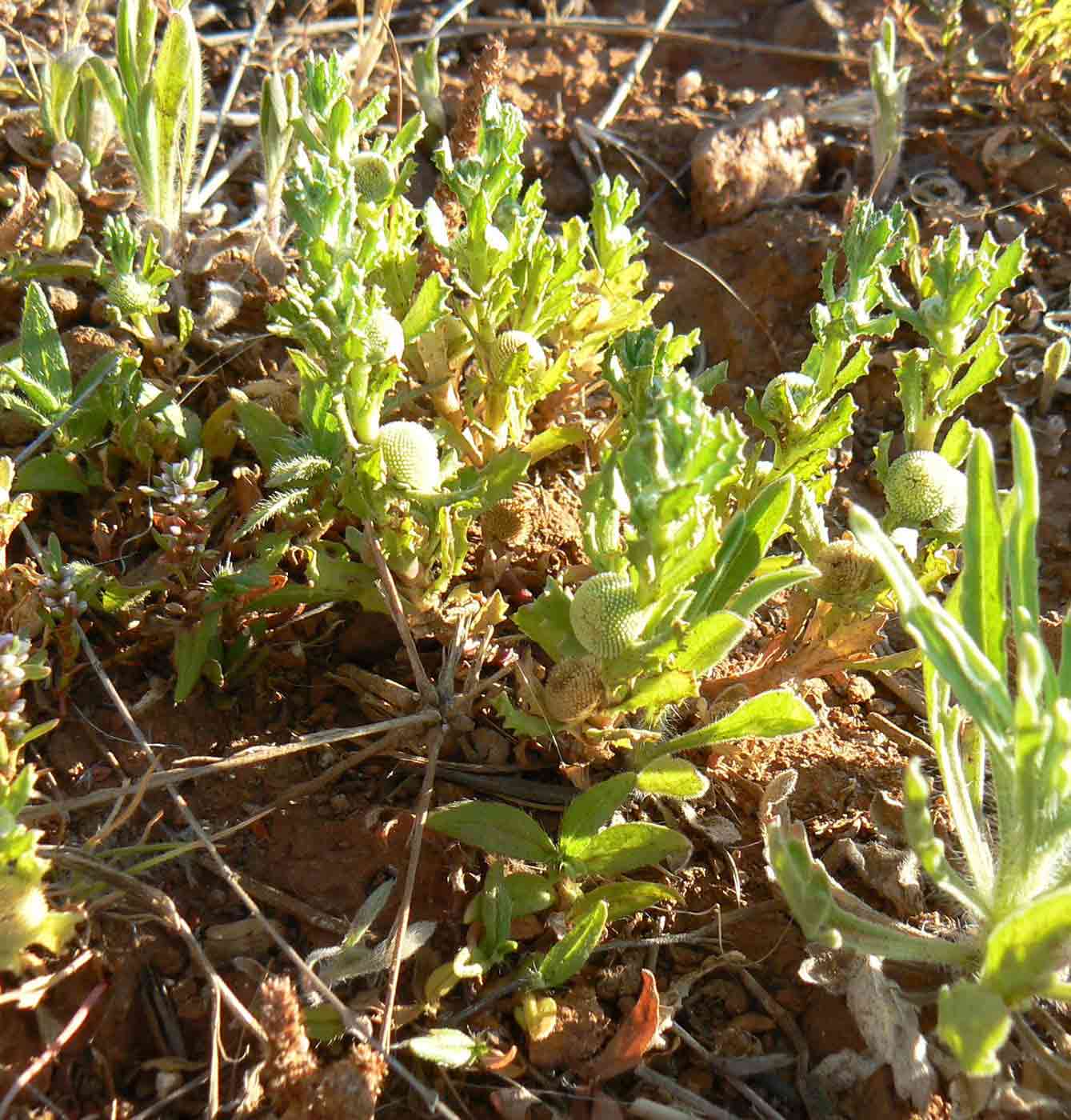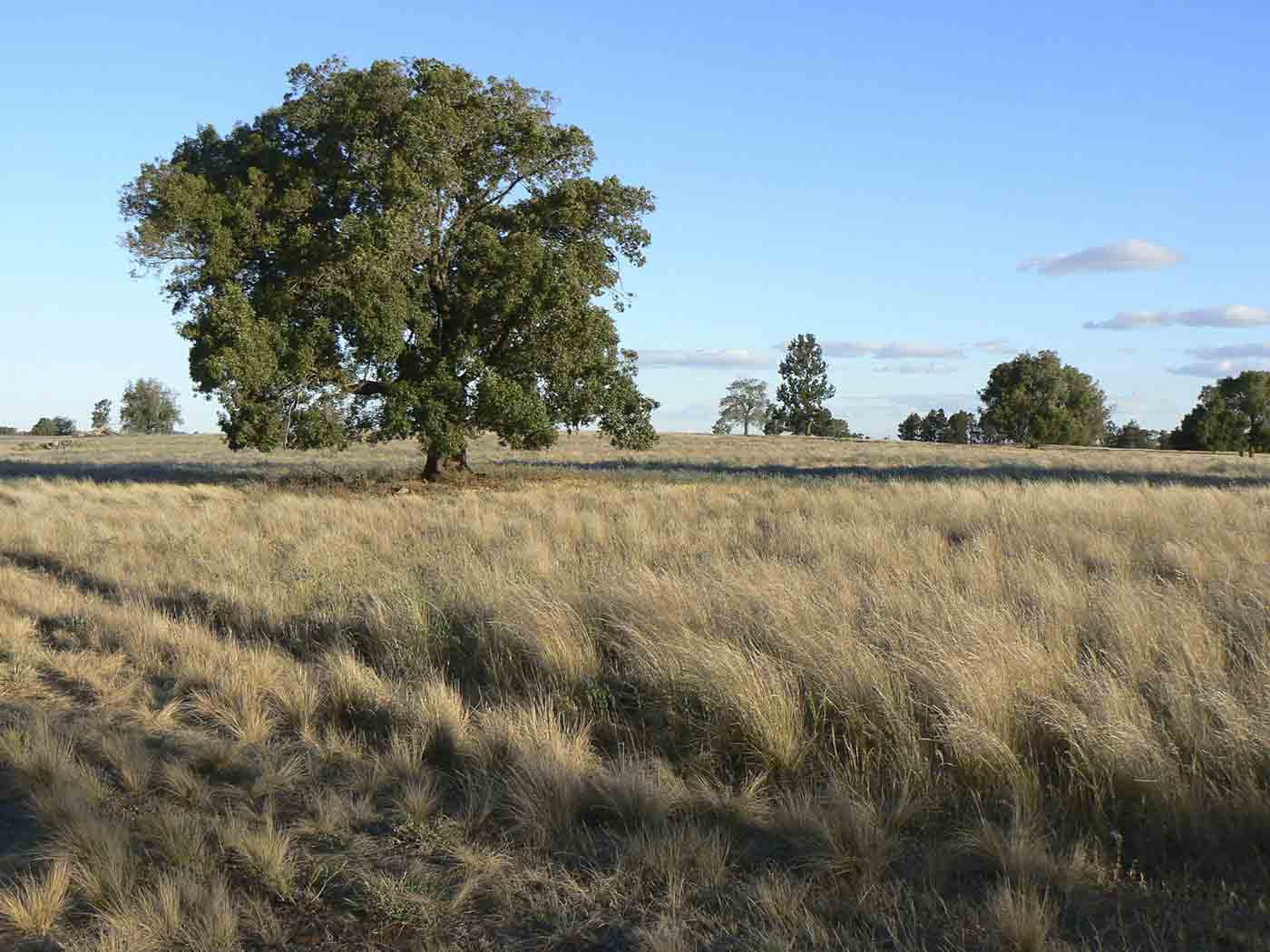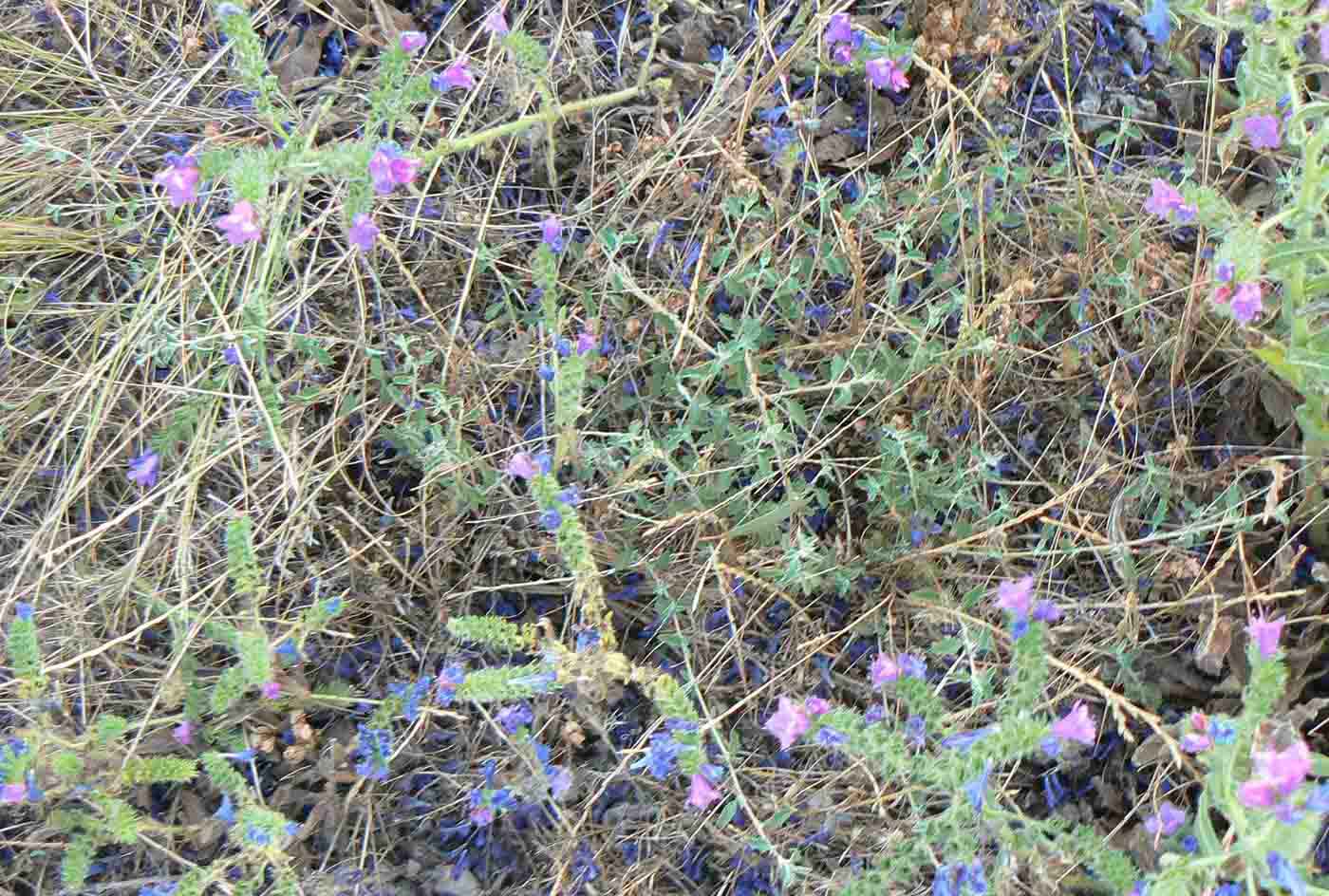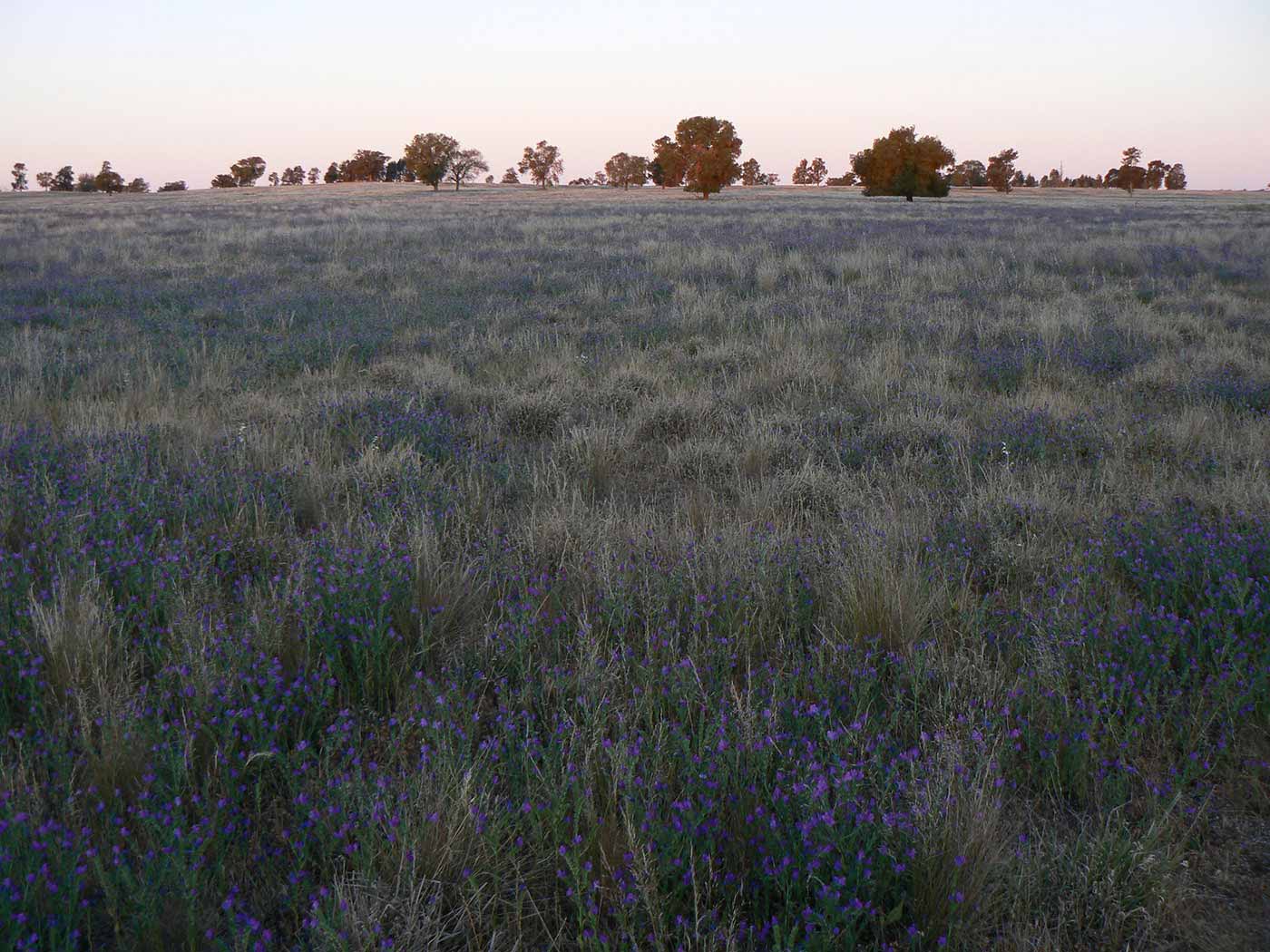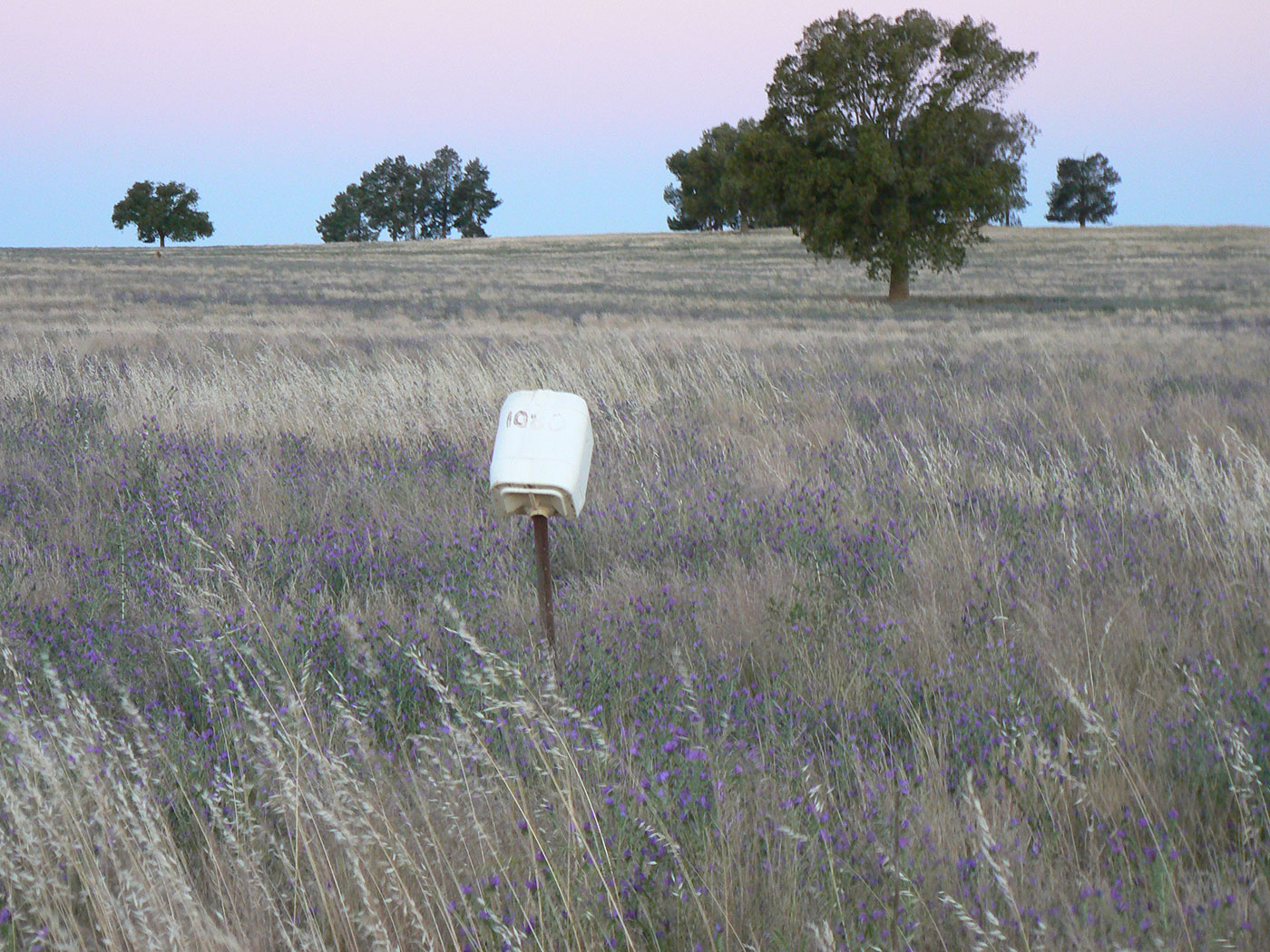1 November 2012
Late afternoon. We begin at the dam, beside the tree belt that runs along the northern fence line of North Taylors. Cool, humid wind blows vigorously from the southwest, pushing trees, bending dry grasses.
In the dam stands a dead eucalypt sapling, drowned. It grew during the decade of hot, dry years, Graham Strong explains, when the dam held no water.
Around the edge of the dam, beside rushes, where dam water has receded in recent months, grows ‘old man weed’, the renowned medicine plant used by Wiradjuri people. Our fingers roll and crush its serrated leaves. We breathe in the pungent aroma.
Blown by cold wind we walk northwards, up the gentle slope, towards a kurrajong tree.
Up here on the ridge, the stony ground swells beneath the old tree, lifted by centuries of root growth. Despite its great age, the kurrajong seems healthy, its foliage dense, flower buds forming. ‘Kurrajongs are quite sensitive to agricultural chemicals’, says Graham. He describes an intensively cropped paddock on a nearby farm in which all the kurrajong trees, many as old as this one, are dying.
The southwesterly animates branches of dark green leaves. I turn my back to the wind, and hold the digital recorder close. We talk about the productive role of this kurrajong tree. Roots penetrating dark strata beneath our feet, dissolving rock, drawing minerals into branches, scattering nutrient rich leaves and flowers, feeding soil and grasses.
No sheep have grazed this paddock since the first week of August, almost three months ago. Ewes lambed here over winter. The long tussocks of perennial grass that grow in North Taylors give newborn lambs shelter from bitter winds. The varying lay of the land in this paddock, its flats and slopes, disrupts deathly flows of cold air, offering sheep pockets of refuge.
We inspect a tussock of curly windmill grass, a species that dominates the northwest quarter of North Taylors. Along the low, stony ridge, and on the eastern side of the paddock, spear grass is the most common perennial, Graham explains. The Strong family hasn’t sown a crop in this paddock for about 10 years. Over the past decade, native grasses have steadily returned. Years back, when Graham sowed wheat here, ‘the whole paddock was treated the same’. One species blanketed North Taylors. Only kurrajong and white cypress trees broke the uniform expanse of crop.
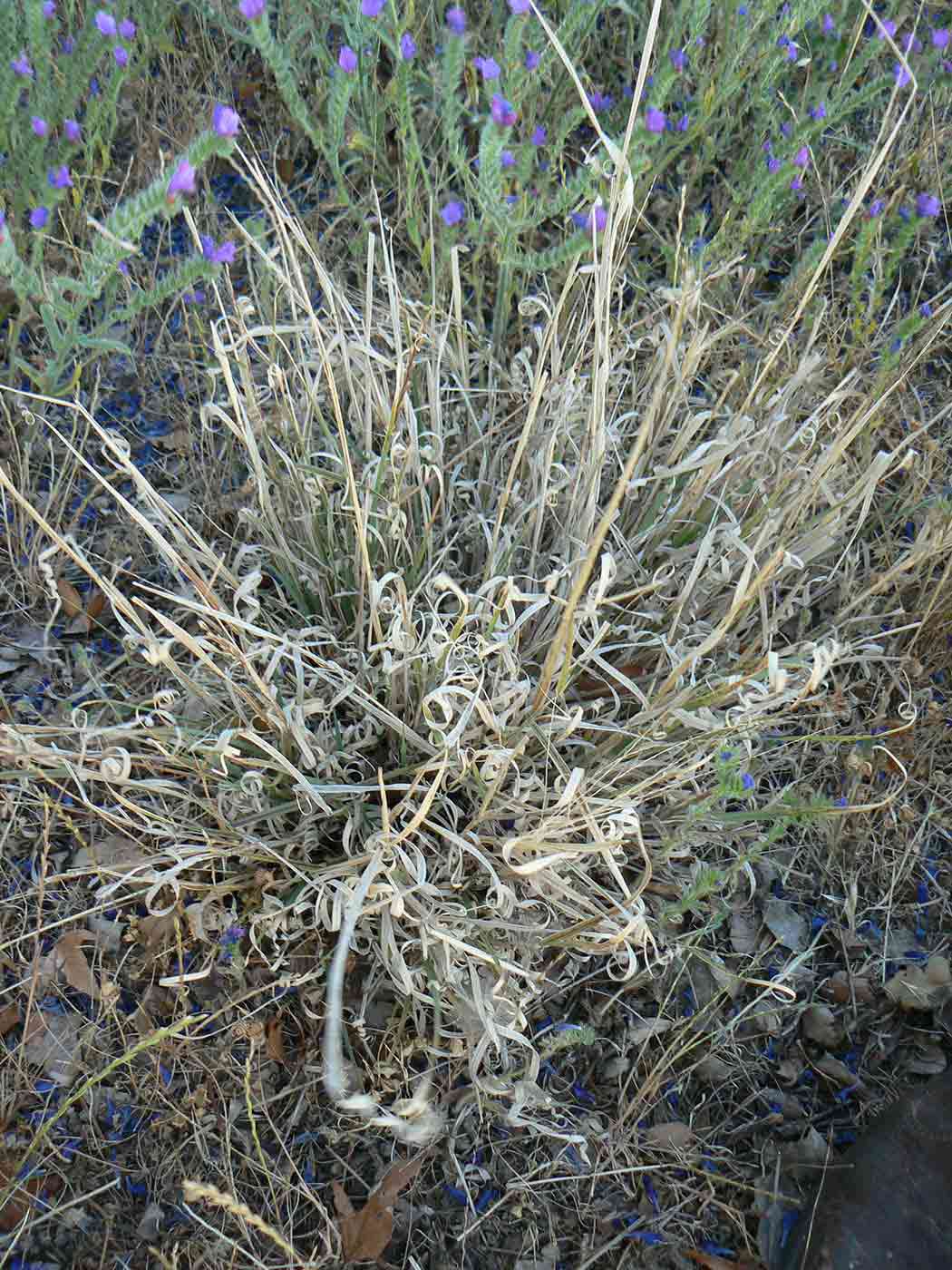
When the powerful machines of industrial farming left alone this land enclosed by a rectangle of wire fence, as winds delivered seeds, as different plants multiplied, the paddock began showing tendencies to support different species in different areas, an expression of shifting soil types, and varying orientations.
A wide diversity of grasses and forbs, even plants considered weeds by most farmers, like Paterson’s curse, provide sheep grazing North Taylors a nourishing array of nutrients and minerals.
From late spring to early autumn, when the spear grasses are shedding their vicious seeds, Graham keeps sheep out of North Taylors. The corkscrew awns twist into wool and flesh. An absence of sheep over the warmer months allows grass tussocks to rise and thicken, ensuring shelter for winter lambs. The seed heads of spear grass are ‘almost like a lock on the gate’, Graham says.
The grasses, the paddock, impose rules of management. If the rules are followed, an ideal lambing paddock is preserved.
Downhill, near the southeast corner and the tree line, we stop at a cement trough. Windblown flowers of Paterson’s curse float inside. The Strong family installed this trough soon after they bought Oakvale from two grandsons of George and Mary Taylor in 1988. Pumps push water from the Murrumbidgee River to tanks installed on high points throughout the Birrego area. Gravity then carries the river water to houses and troughs.
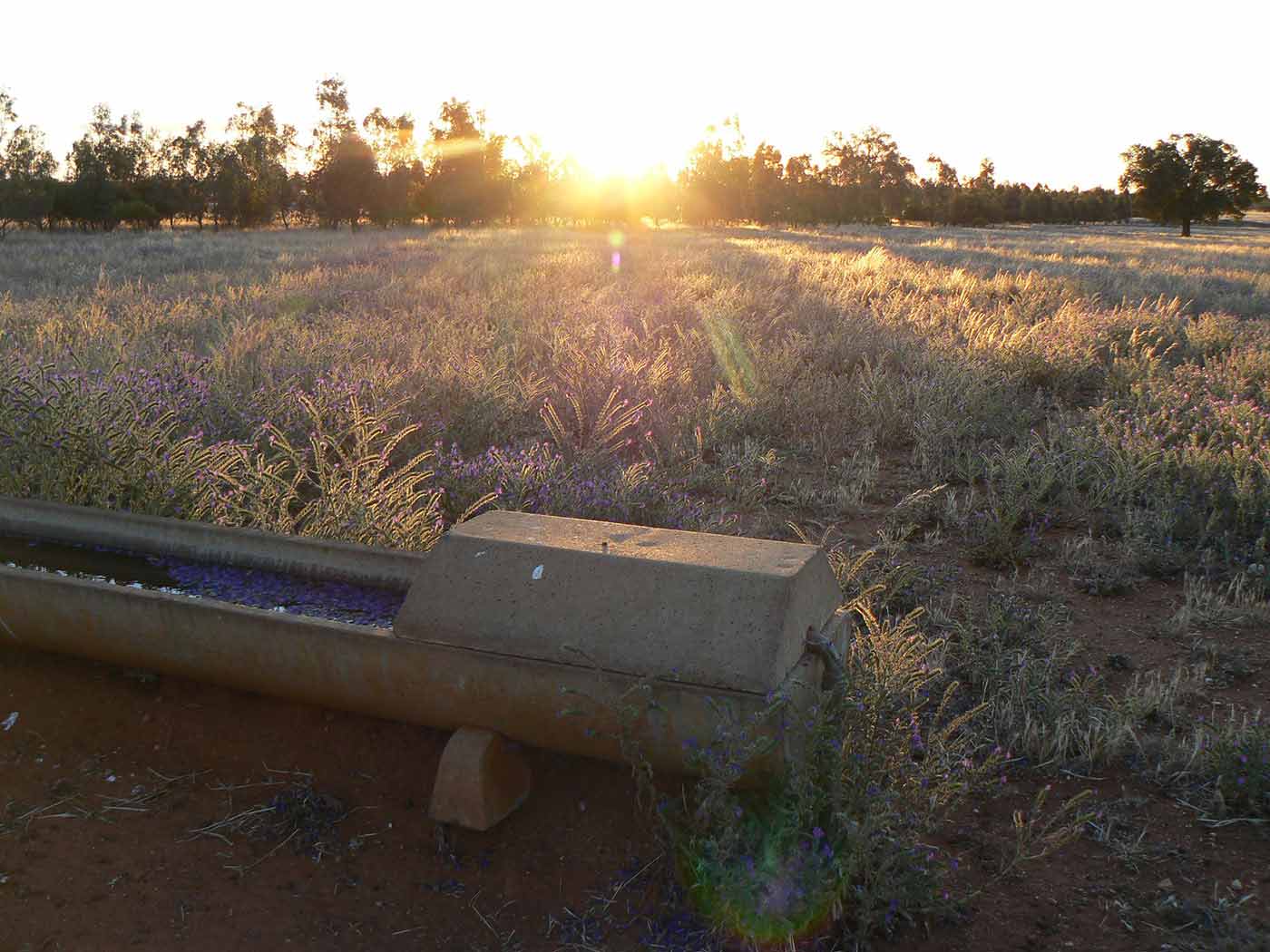
Walking back towards the dam, amid the purple blooms of Paterson’s curse, we encounter a creeping saltbush plant, its grey foliage especially nutritious fodder. Present in the tree line, it seems now to be venturing out, into the paddock.
Our feet crunch through dried grasses and native clover. Last night, over dinner, Graham’s father said that Birrego had just experienced its driest September on record. Far away from here, New York City stands still, its subway closed. Bewildered residents walk wet streets flooded by Hurricane Sandy, an unprecedented ‘super storm’. Yesterday we heard news reports of scores dead, a repair bill of $50 billion. Graham and I talk about the ramifications of the hurricane for the Narrandera district. Rising insurance premiums, faltering economies, declining demand for high quality meat, driving down even further lamb prices, now dipping as the dry spring across southeast Australia prompts the transfer of sheep from paddocks to markets.
The sun is gone but the wind remains as we walk the western fence. We pause beside a plastic chemical drum on a steel post, a fox baiting station. Graham hasn’t laid 1080 poison here for about six years. To control fox populations, Graham explains, baiting must be carefully targeted, and coordinated with neighbours. In the Birrego area, farmers have steadily moved away from livestock and towards extensive cropping, and they rarely need to kill foxes. To minimise lamb predation, Graham is breeding ewes with greater capacities to defend their pale offspring. Sturdy, agile mothers with long necks, with faces free of wool, can better detect and repel the bushy tailed predators.
Cutting back through the centre of the paddock, towards the ute, we spot a lucerne plant, its succulent leaves deep green. Graham suspects that a crop in North Taylors was once undersown with lucerne. Now the fine pasture species is naturalised here, deep roots tapping the buried moisture and nutrients of subsoils.
Even colder, the wind. Through the line of young trees, over the electric fence, and into the ute. Towards the light and warmth of Oakvale homestead, the darkening paddock behind us.
Explore more on the Paddock Report
